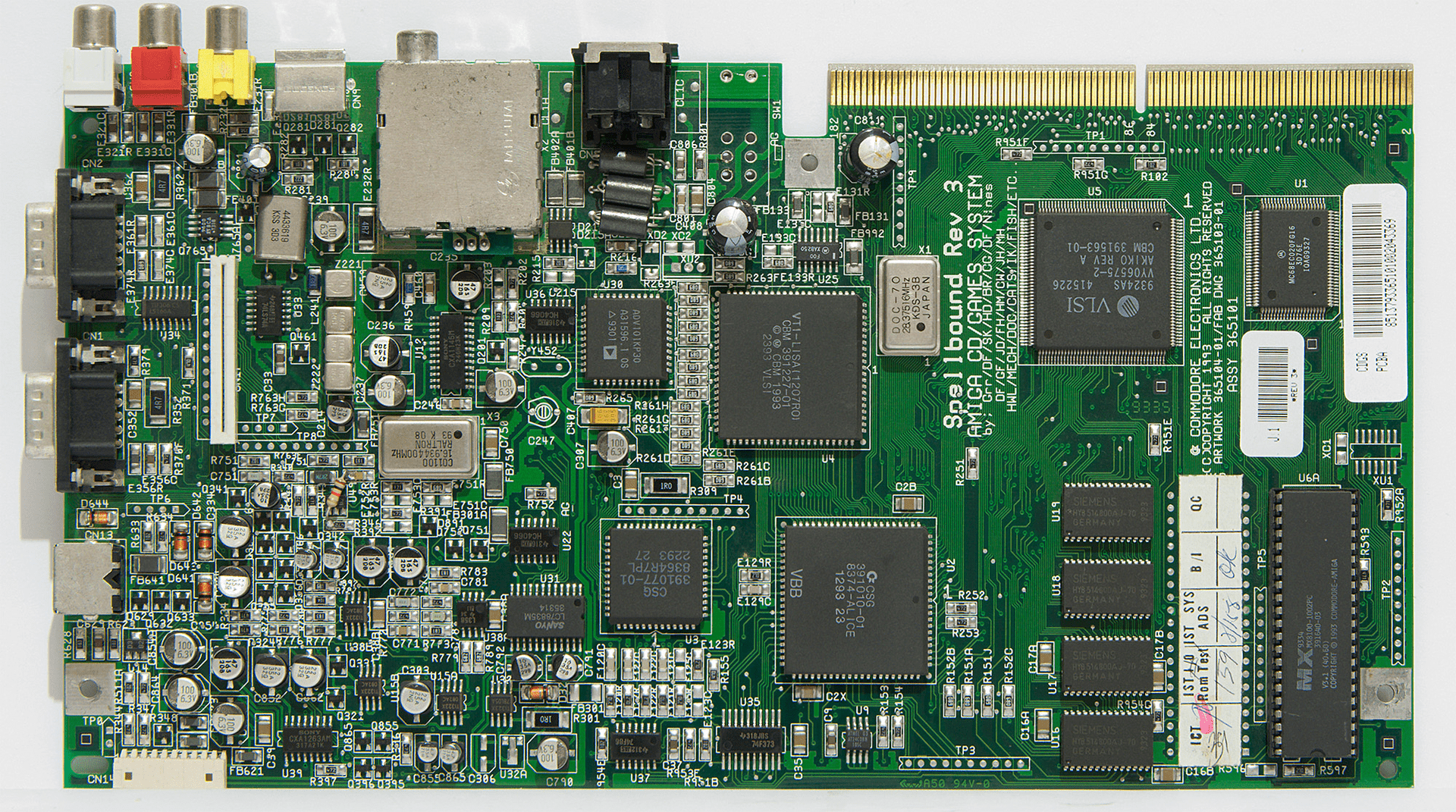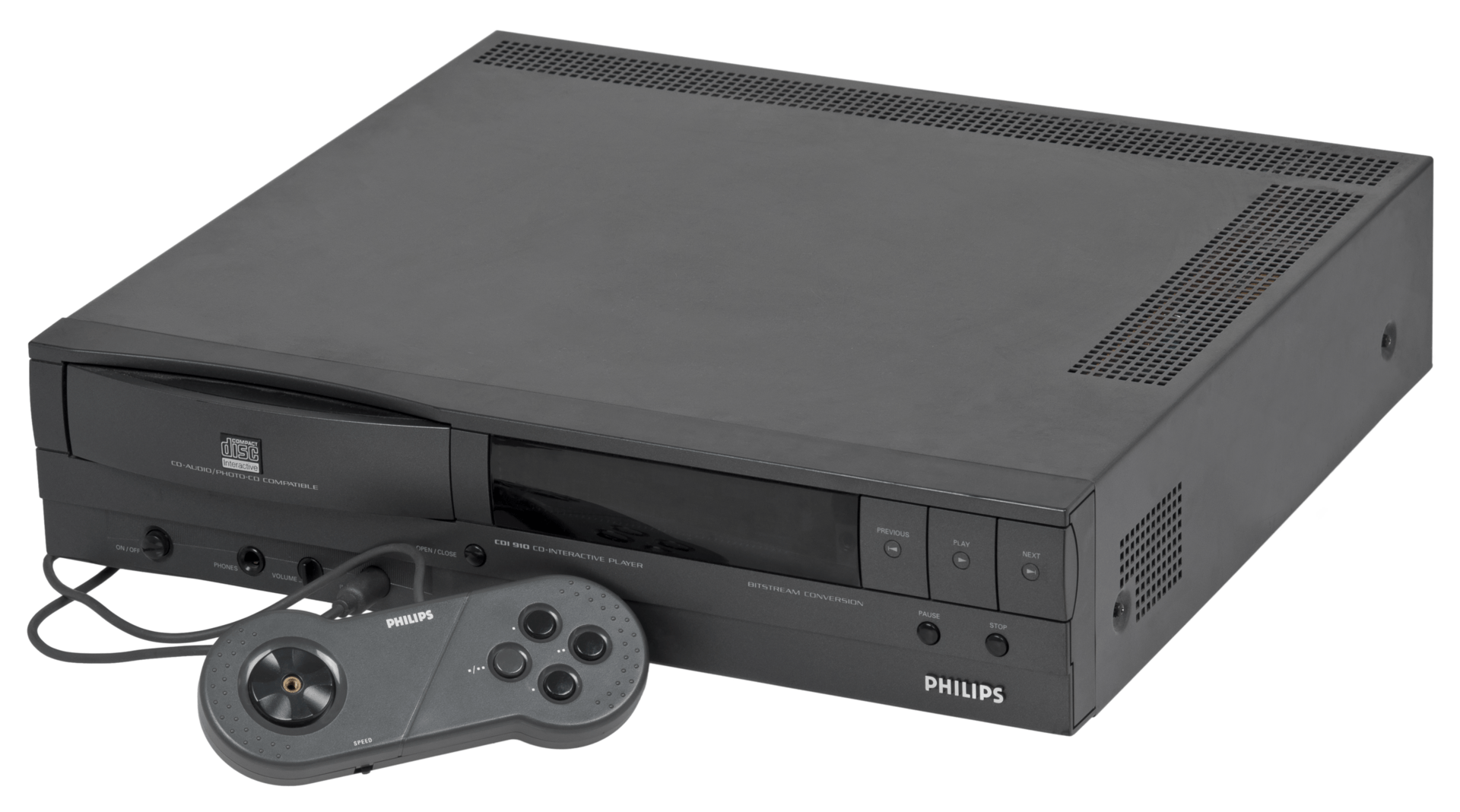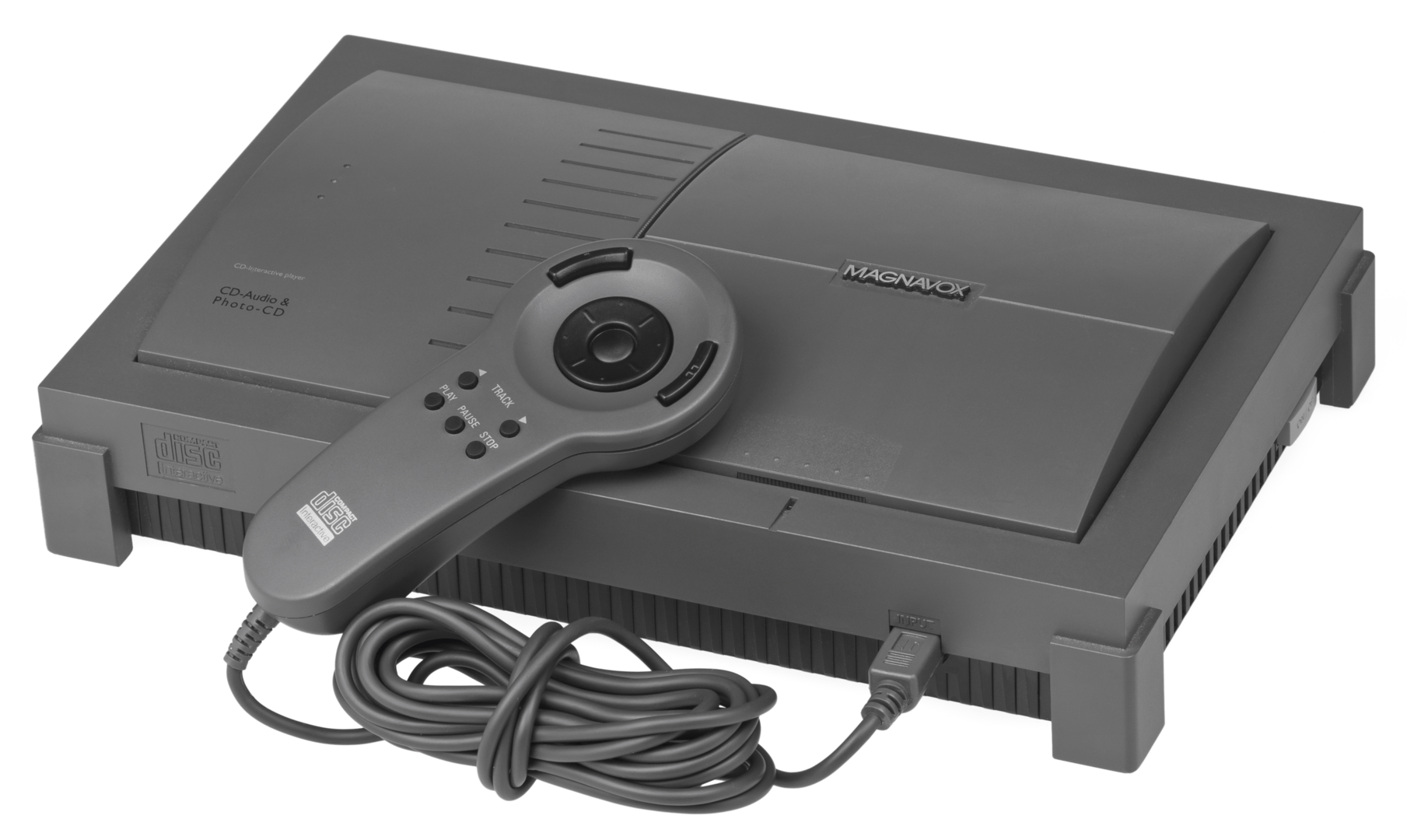The Amiga CD³² from Commodore was a particularly compact Amiga 1200 with CD-ROM drive that was reduced to its gaming attributes and was the first 32 game console in Europe to compete against the in 1991 presented CD-i from Philips with 16-bit architecture. The first PlayStation soon made both systems look old.
Table of contents
- 1 C: B_retro Ausgabe_98 Amiga CD³² vs. Philips CD-i
- 32-bit game console versus 16-bit CD player
- The technical specifications of the Amiga CD³²
- The technical specifications of the Philips CD-i
- Well-known games for the Amiga CD³² and the Philips CD-i
- C: B_retro Ausgabe_98 Spielkonsolen_bei_C: B_retro
- C: B_retro Feedback
- Feedback is always welcome
- C: B_retro Review
- An overview of the last fifteen issues
After the Dutch manufacturer had launched its multimedia system CD-i, which was developed together with Sony, in the USA in 1991 and also in Europe from 1992, Commodore introduced the first game console with modern 32-bit architecture from 1993 onwards on the European market, however. In the end, neither of them had a chance against the PlayStation from Sony, which was to revolutionize the game console landscape from 1994 onwards.
The Amiga³² was the first 32-bit game console in Europe in 1993
C: B_retro Ausgabe_98 Amiga CD³² vs. Philips CD-i
32-bit game console versus 16-bit CD player
The Amiga CD³² and the CD³² were based on the Amiga 1200, but, unlike the Amiga 1200, did not rely on its system controller “Gayle”, but on its own, newly developed custom chipset called “Akiko”, which in particular made porting PC games easier should do.
The concept was similar to that of the CDTV, but was packed in a housing that accommodated the 16-bit game consoles that were extremely popular at the time, such as the Sega Mega Drive and the Super Nintendo Entertainment System was modeled after. Like many consoles and home computers of the late 1980s and early 1990s, the Amiga CD³² also relied on a main processor from Motorola.
The CD³² relied on a Motorola 68020 with a 32-bit wide data bus, 16 MB address space and a clock frequency of 14 MHz. In contrast, the CD-i was a 16-bit CD player with a main processor of the Philips SCC68070 type, which was based on a Motorola 68000 and operated at 15.5 MHz.
The technical specifications of the Amiga CD³²
The Amiga CD³², the first real 32-bit game console for the European market, could be expanded to a full-fledged Amiga or, alternatively, to a video CD player via a slot on the back and had the following technical specifications.
- Motorola 68020
- with 14.18 MHz in the PAL version
- and 14.28 MHz in the NTSC version
- 2 MB chip RAM
- 1 MB ROM with Kickstart ROM 3.1 and integrated file system
- 1 KB Flash ROM for saving games
- AGA chipset
- CD-ROM double-speed drive
- with Audio CD playback option
- Akiko chip, which was responsible for the CD-ROM drive plus other features
- 24-bit color palette with 16 , 7 million colors
- up to 256 colors simultaneously in palette modes
- 262,144 colors simultaneously in HAM8 mode
- Resolution up to 1280 × 512 pixels (more with overscan)
- Amiga OS 3.1
- 4 × 8-bit audio channels
- Gamepad, serial port, 2 × gameport, interfaces for a keyboard
- S-video output (4-pin mini-DIN)
- Composite -Video output
- High-frequency audio/video output (antenna)
- Audio output (2 × cinch and 3.5 mm stereo jack socket)
- Keyboard (6-pin mini-DIN)
- 2 × mouse/joypad ports (D-Sub9)
- RS-232 serial/AUX port (6-pin mini-DIN)
- Expansion slot:
- 182-pin connector for MPEG cartridge
- Third-party adapters such as the SX-1 or SX32 expansion cartridges
With this hardware, the Amiga CD³² competed from September 17, 1993 in particular against the Sega Mega-CD, a Sega Mega Drive with a CD-ROM drive and the Philips CD-i. A retrofittable MPEG accelerator card could also be used to play video CDs in S-VHS with stereo sound.
The German-language website CD32-Allianz.de provides many more details and exciting backgrounds to the CD³².
 Motherboard of the Amiga CD³² (picture : Bill Bertram, CC BY-SA 3.0)
Motherboard of the Amiga CD³² (picture : Bill Bertram, CC BY-SA 3.0) The hoped-for conversions of PC games did not materialize, however, because the main processor was not sufficient to keep up with the development of 3D games without further hardware support.
The YouTube channel “Gameswelt “Has dedicated its own special to the Amiga CD³².
The technical specifications of the Philips CD-i
The Philips CD-i was a multimedia system released in October 1991 that was jointly developed by Philips and Sony and later sold exclusively by Philips.
The CD-i was not only a CD, video and audio player for audio CDs, CD + G (CD + Graphics), karaoke CDs, photo CDs (Kodak Photo CD) and video CDs, but also a 16-bit Game console with the following specifications.
- Processor: 16/32-bit Philips SCC68070 with 15.5 MHz
- Video: SCC66470 later MCD 212
- Audio: MCD 221
- RAM: 1MB
- Colors: 16.7 million of which 32,768 simultaneously on the screen
- Resolution: 384 × 280 to 768 × 560
- Operating system: CD-RTOS
The CD-i was played optionally via a remote control, a joypad or a gamepad. In addition to the Philips CD-i 910, the slightly cheaper CD-i 450, CD-i 400 and CD-i 210 models were also released, which marked the entry into the CD-i world.
 Philips CD-i 910 ( Image: Evan-Amos, CC BY-SA 3.0)
Philips CD-i 910 ( Image: Evan-Amos, CC BY-SA 3.0)  Philips CD-i 400 (Image: Evan-Amos, CC BY-SA 3.0)
Philips CD-i 400 (Image: Evan-Amos, CC BY-SA 3.0) The support from the programmers was good in the beginning and so even titles licensed by Nintendo appeared for the CD-i. Among them today were sometimes strange-looking games from the Zelda and Super Mario franchises, which the YouTuber “Ulti” took a closer look at.
After sales of the CD-i fell sharply from 1994 onwards and the first PlayStation began its triumphal march, Philips released a TV with an integrated CD in addition to a comparatively inexpensive expansion card for the PC, which made the CD-i functionalities available under Windows 95. i.
Then the Dutch manufacturer let the project expire at the end of 1995 and did not present a successor to the CD-i.
Well-known games for the Amiga CD³² and the Philips CD-i
For the Amiga CD³² in particular, numerous successful games were released that had already enjoyed great success on other home computers and game consoles. In addition to Battle Chess, Defender of the Crown, Frontier: Elite II and Legends, Exile, Gloom, D-Generation and Superfrog should also be mentioned here.
A total of 175 Games published on CD for the Amiga CD³², the YouTube channel “J Does It All” played them all and published its own top list.
The point-and-click adventure The 7th Guest from Virgin Interactive and the puzzle adventure Myst, with six million copies at the time the best-selling computer game in the world, stood out on the CD-i , out.
The YouTube channel “Dubbloseven” presents all the games for the Philips CD-i in an overview lasting almost one hour.
The Amiga CD³² and the Philips CD-i could not stand up to the overwhelming power of Nintendo and Sony, who split up the console market with the first PlayStation and the Nintendo 64 in the mid-1990s and consequently disappeared from the scene. Today both platforms are almost forgotten.
C: B_retro Ausgabe_98 Spielkonsolen_bei_C: B_retro
In the meantime, C: B_retro has already reported on many retro game consoles and home computers from the 1970s, 80s, 90s and early 2000s, high time for a small overview:
C: B_retro Feedback
Feedback is always available welcome
The editors are happy to receive constructive criticism, praise, but also suggestions, in order to be able to align the series even more closely to the wishes of the readership in the future. With this reading material in your luggage, the editors wish you a relaxing Sunday.
C: B_retro Review
The last fifteen Overview of issues
The last 15 topics from previous issues of C: B_retro :
- C: B_retro Ausgabe_97 : How the Motorola ROKR E1 became the first iPhone
- C: B_retro Issue_96 : The Intel Pentium Pro
- C: B_retro Issue_95 : Games that have defined their own genre
- C: B_retro Issue_94 : Doom 3 in the benchmark
- C: B_retro Issue_93 : AMD K6, K6-2 and K6-III
- C: B_retro Issue_92 : GeForce vs. Radeon in a duel of the generations
- C: B_retro Issue_91 : One of the most successful game consoles in history
- C: B_retro Issue_90 : The ideal gaming PC has been advising gamers for over 15 years
- C: B_retro Issue_89 : Your best games of all time have been selected
- C: B_retro Issue_88 : What are the best video games of all time?
- C: B_retro Edition_87 : The first IBM PC in the world defined standards
- C: B_retro Edition_86 : Microsoft Windows 96
- C: B_retro Edition_85 : AMD Phenom and Opteron ( “K10”)
- C: B_retro Issue_84 : FIFA Soccer and other football pioneers
- C: B_retro Issue_83 : Hercules 3D Prophet 4500 with PowerVR Kyro II
- C: B_retro Ausgabe_82 : ComputerBase builds the perfect Voodoo-2-Retro-PC
- C: B_retro Ausgabe_81 : The first graphics cards of the ComputerBase-Community
- C: B_retro Issue_80 : The early history of the graphics card
- C: B_retro Issue_79 : Nokia Communicator
- C: B_retro Issue_78 : The first Microsoft Xbox
Even more content of this kind and many more reports and anecdotes can be found in the retro corner of the ComputerBase forum as a Also in the subject areas C: B_retro and Retro.